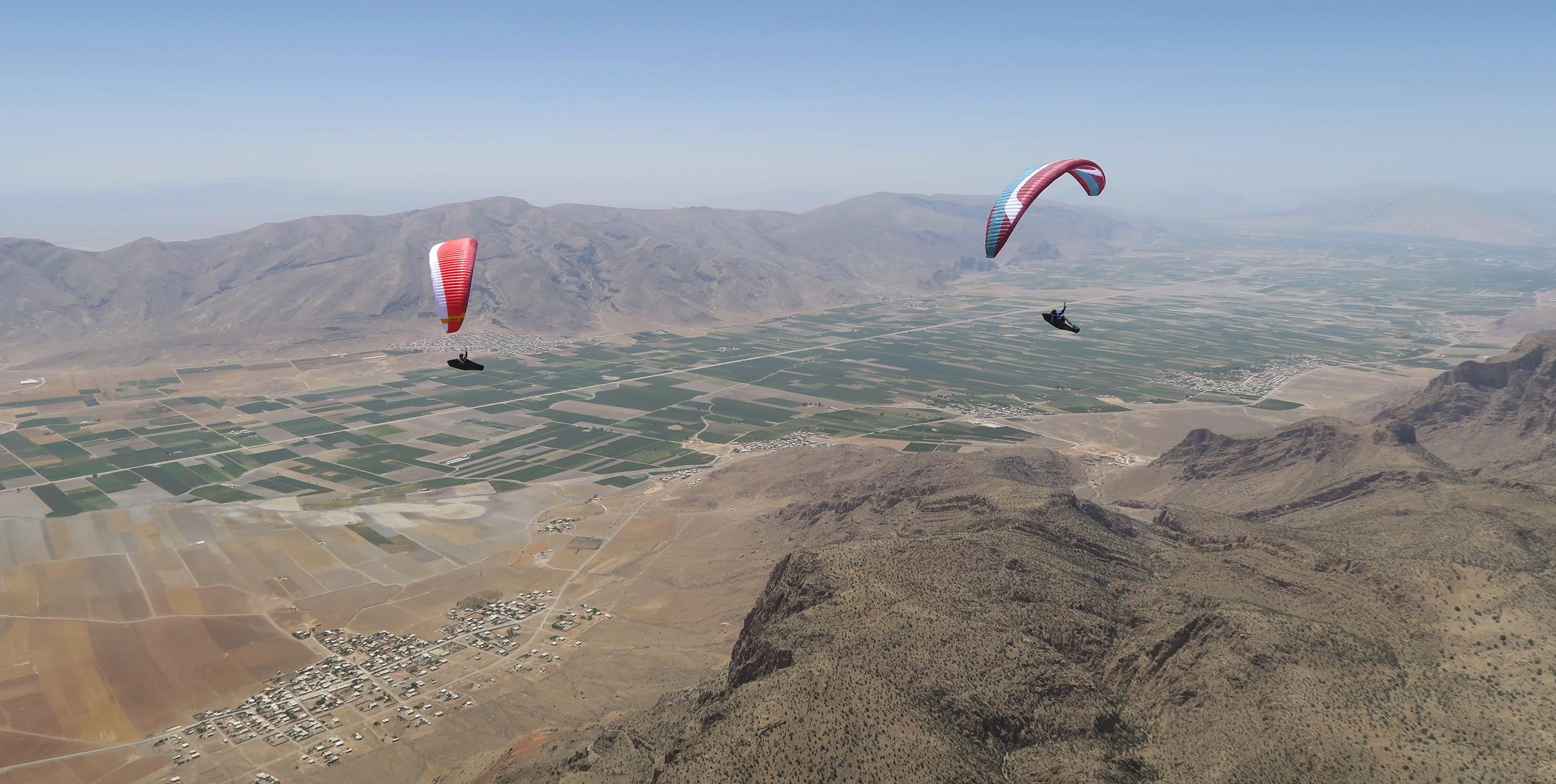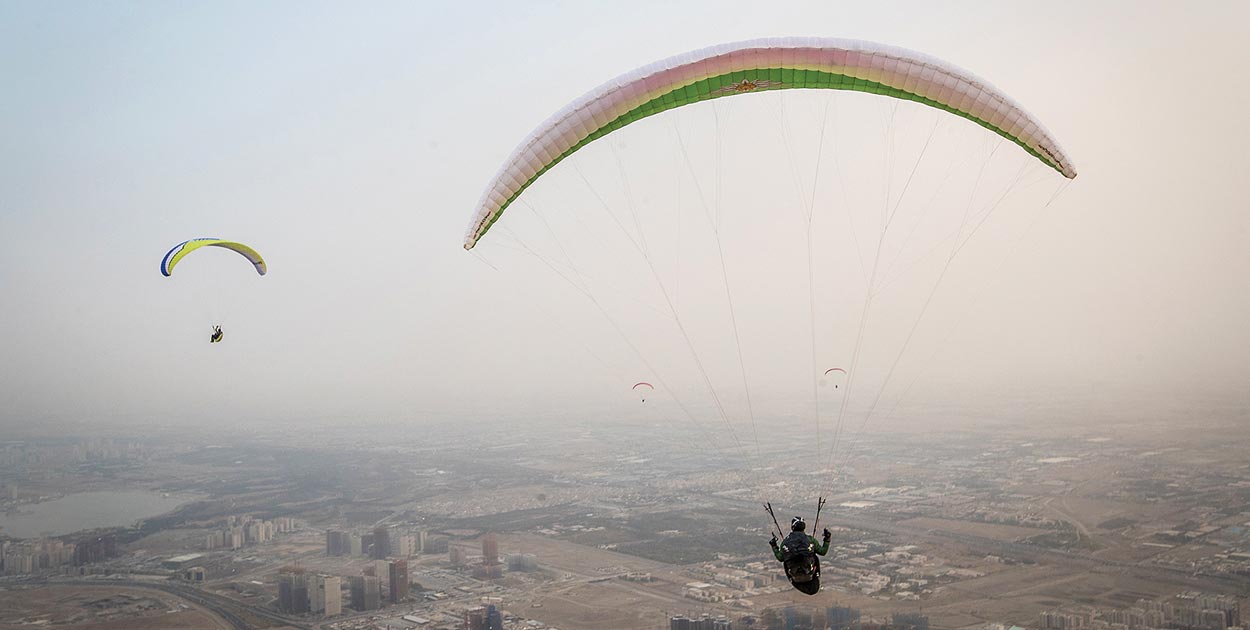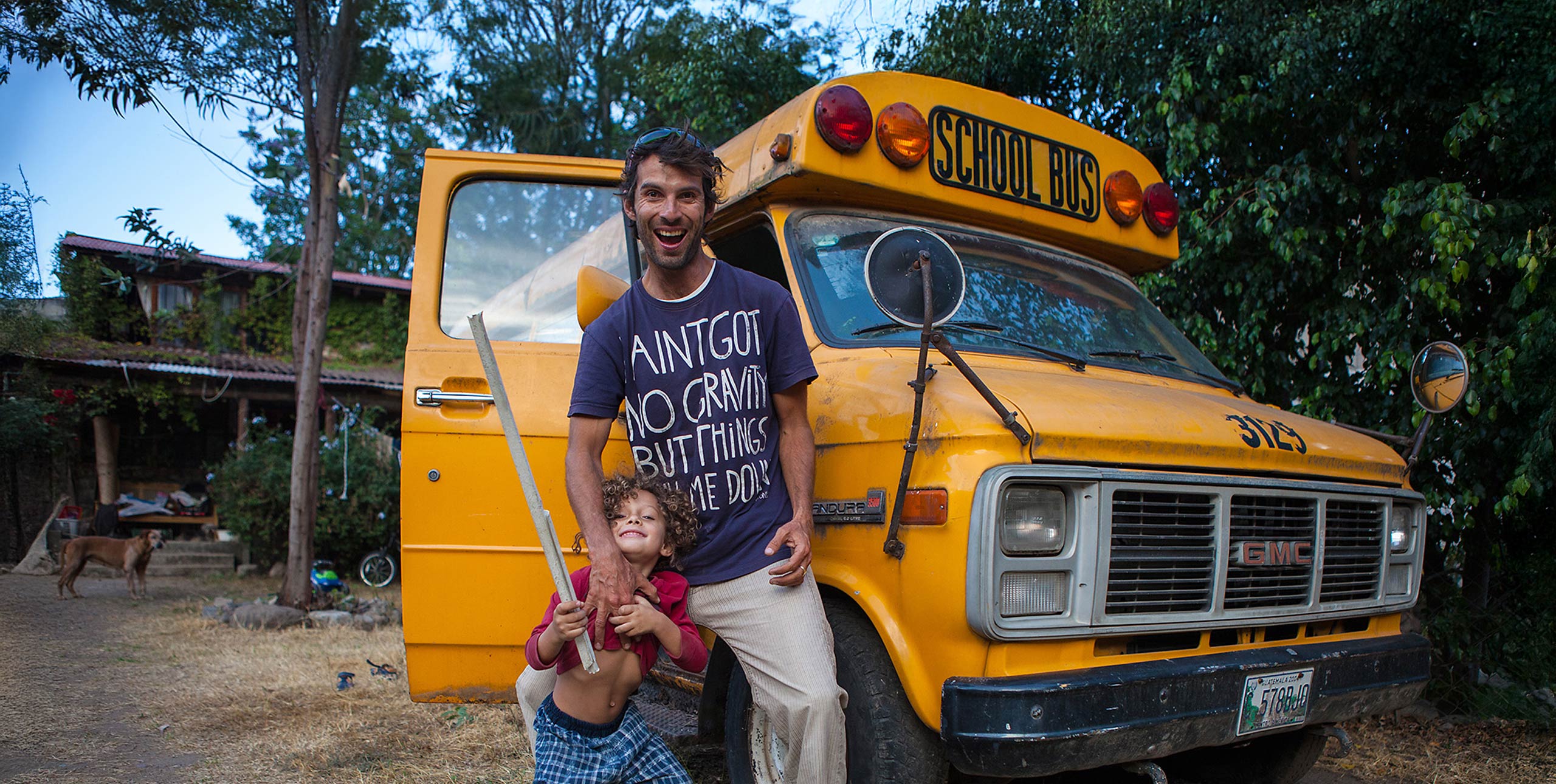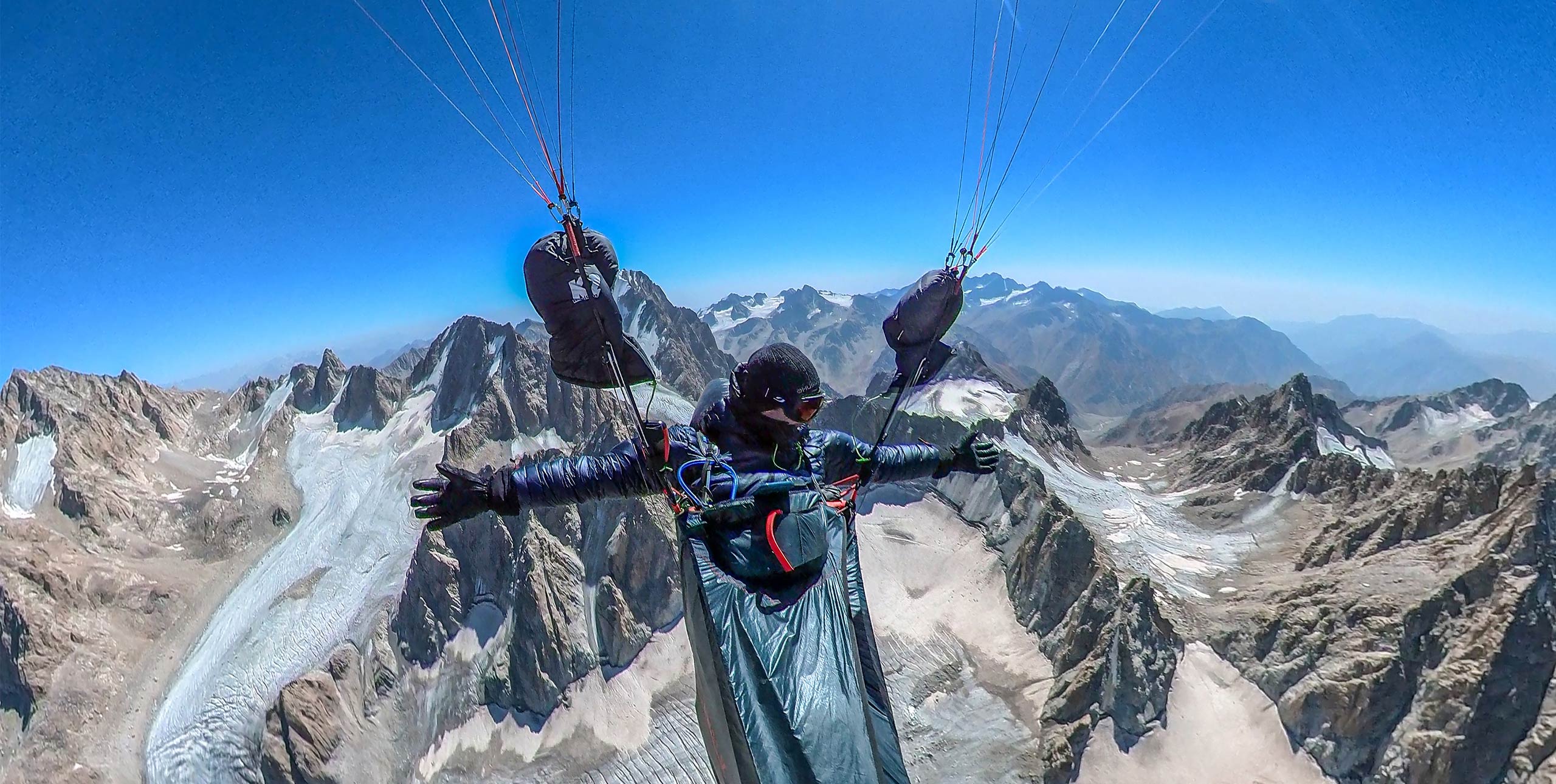
Paragliding in Iran: Country guide
14 October, 2022The paragliding in Iran is diverse and exciting, from the famous site of Rokh with its 400km days and 6,000m cloudbase to soaring by the Caspian Sea. However, Western pilots need a flying permit to fly in Iran and a local pilot needs to take responsibility for you while you are in the country. You should not fly on your own in Iran. For contacts and more information on how to fly in Iran, read on. By Till Gottbrath.
When to travel?
The very long XCs that Iran is known for (400km+, 6,000m base) are flown between June and August. But then it is extremely hot on the ground. If you don’t want to chase records, it’s better to travel in April to May. Then it cools down at night, paragliding is great and the landscape is even greener.
Flying characteristics and sites
Iran is mountainous and you could almost say it is one huge flying site. On XContest.org you can find out the most important places. The sites in the north towards the Caspian Sea are kind of similar to flying in the Alps: a “real” mountain range with valley winds and lower cloudbase. They are also suitable for less experienced pilots.
South of the Alborz Mountains it is dry and hot, often desert-like. There are not so many continuous mountain chains but plains, from which single mountains and ridges arise. It is a mixture of mountain and lowland flying. In high summer cloudbase here rises to 7,000m and the thermals can be very challenging during the day – nothing for beginners.
The most popular site is Rokh (near Isfahan; over 4,000 flights in XContest). Most 400+km flights have been logged from Kerend Gharb (near Kermansha). Also very popular are Veis Kermanshah (2,500 flights), Ghalaje Ilam as well as Seydan (near Marvdasht). To the west near Tehran are the flying sites of Shahran and Hemat; a bit further out to the east Absard and Emamzadeh Hashem.
Follow the recommendations of the locals, they know best.
Organisation
Flying in Iran as a Western pilot needs organisation. Foreign pilots need a flying permit to fly in Iran. However, there’s no international request system for it which means a local, well-known pilot has to take responsibility for the foreign pilot(s). Our trip was run under the responsibility of Hamed Totonshi.
You should generally not paraglide on your own in Iran, lest you accidentally fly somewhere you’d rather should not fly (military airspace must be strictly avoided).
Fateme Eftekhari (fatemeeftekhari90@gmail.com) and Mohamed Semnani live in Isfahan and distribute Skywalk and Advance in Iran. Afshin and Hamed Totonshi (hamedtotonchi@gmail.com) are located in Teheran and sell Nova. Neither offer ready-made tours, but will help create tailormade trips according to the wishes of the guests.
Ideally, they prefer to work with complete groups who have similar interests. If you want to go far with XC flying, 4-5 pilots are the maximum. For more recreational trips, slightly larger groups can be handled too. get in touch with them well ahead of time, but at the same time be prepared to change your plan on the way at very short notice.
Tip: Have confidence. Let them do it – and everything will be great.
Equipment
With the exception of the flying sites near the Caspian Sea, almost all take-off and landing sites in Iran are rocky, dusty, sandy – not ideal conditions for brand new or lightweight wings.
Costs
Travelling in Iran is cheap for Western tourists. However, it is difficult to get money at all. International credit cards are hardly accepted. For a while now there has been the “Iran Tourist Card”, a kind of national pre-paid debit card especially for tourists, with which you can pay practically everywhere.
Accommodation
In the cities there are large hotels according to western standards, in the countryside you may sometimes spend the night in private houses on a rather firm cotton mattress on the floor. If you are very sensitive, you should also take a light inflatable mattress with you. A lightweight sleeping bag liner is also recommended as your own linen.
Food & Drink
Tasty and inexpensive. No alcohol allowed.
Visas
The easiest way to get a standard tourist visa is through tour operators or specialised agencies. For us as German nationals it cost €85-100.
For our group, Hamed Totonchi took care of everything. We filled out a PDF and sent it to him. He took care of it on the spot and sent us back another PDF, with which we then got the visa issued in a quarter of an hour at the consulate in Munich (€50).
You should start the visa application process at least two to three months in advance. Visa regulations will vary from country to country. Some countries advise against all travel to Iran – if you decide to go anyway, this will impact what type of travel insurance cover you can get.
Be aware that the present political situation (October 2022) may change the visa application process or lead to general travel restrictions.
GETTING THERE
Turkish Airlines flies to several airports in Iran at reasonable prices (32 kg free luggage). Open-jaw flights are also possible. To be on the safe side, allow at least two hours for changing planes in Istanbul. When comparing flight rates, be sure to include the required baggage.
Dos and don’ts
Most Iranians are very tolerant towards visitors. Nevertheless, you should familiarise yourself with and respect local rules and customs. These include styles of dress and behaviour between men and women in public.
Just do some research online before you go to avoid any unintended misbehaviour (eg here, here and here). Do not photograph military buildings, bridges, (tips on photography) etc, and certainly do not paraglide near them. Avoid travelling during Ramadan.









